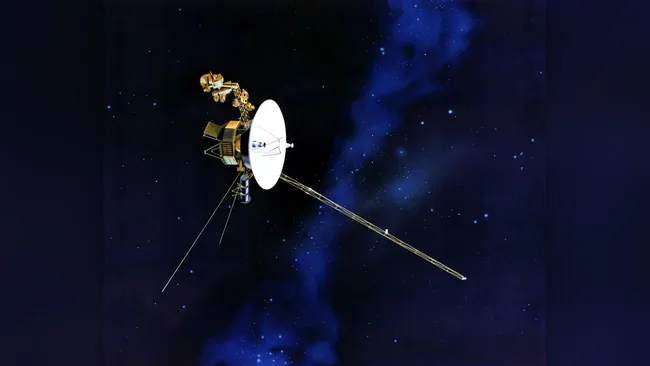NASA’s Voyager 1 spacecraft has been silent for 3 months and requires a ‘miracle’ to revive it
A communications glitch is preventing NASA’s Voyager 1 probe — the farthest spacecraft from Earth in history — from sending home data, and mission scientists are growing concerned.
Voyager 1, one of NASA’s enduring space missions, is currently experiencing a communication malfunction, causing growing concern among the mission team regarding the spacecraft’s potential recovery. Presently, engineers are diligently working to resolve a computer error that is impeding the transmission of data back to Earth. However, the combination of software limitations and the vast distance involved presents significant challenges in rectifying the issue.
According to NASA officials, since November 14 of the previous year, the interstellar Voyager 1 probe has been unable to transmit the data collected by its scientific instruments. Nevertheless, the probe’s support team based in California has confirmed that it is still capable of receiving and executing commands without any issues. Voyager 1 continues its journey through interstellar space, surpassing a distance of 15 billion miles (24 billion kilometers) from Earth, far beyond the outer reaches of our solar system. Unfortunately, due to the malfunctioning systems, the engineers face difficulties in fully assessing the current status of the spacecraft.
In an interview with Ars Technica, Voyager project manager Suzanne Dodd expressed her belief that it would be an extraordinary feat if the spacecraft could be recovered.

Ever since its launch on September 5, 1977, Voyager 1 has been steadily moving away from the sun at a speed of approximately 10.5 miles per second (17 kilometers per second). In 2012, Voyager 1 achieved a significant milestone by officially entering interstellar space, making it the first spacecraft to accomplish this feat. Presently, it holds the distinction of being the farthest human-made object from Earth.
Typically, the probe transmits valuable data back to Earth using its flight data system, which consists of three onboard computers. However, a recent issue has arisen with one of its subsystems, the telemetry modulation unit (TMU), causing it to transmit strings of repeated zeros instead of the usual binary code for several months.
Unfortunately, rectifying this malfunction has proven to be a complex task due to the age and distance of the spacecraft from Earth. NASA reports that after sending a command, the ground team must patiently wait for 45 hours to receive a response from the craft. Additionally, since the probe was designed and constructed in the 1970s, much of its onboard technology is no longer considered state-of-the-art, and the schematics are not digitized.
“The individuals who were involved in building the spacecraft are no longer with us,” Dodd explained. “While we do possess a reasonably comprehensive set of documentation, a significant portion of it exists in paper form, necessitating an archaeological approach to retrieve the necessary documents.”
In the event that NASA is unable to establish communication with Voyager 1, the agency will still possess at least one spacecraft in interstellar space. Voyager 2, its counterpart, successfully crossed that threshold in 2018 and has largely remained in contact with Earth since then. (In the summer of 2023, NASA researchers unintentionally lost contact with the probe for several weeks.) NASA’s New Horizons probe is anticipated to completely exit the solar system sometime in the 2040s.
However, at present, the Voyager team is dedicated to restoring the TMU’s functionality. “We have certainly not given up,” Dodd affirmed.
This article is republished from livescience under a Creative Commons license. Read the original article.
Do not forget to share your opinion with us to provide you with the best posts !



0 Comments